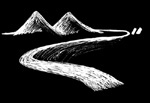
Eric P.Marczak
Performer, Composer, Designer, Maker and Teacher
 |
Materials Eric P.Marczak Performer, Composer, Designer, Maker and Teacher |
|
Materials: Wood and River cane are the materials to be addressed here. Why wood? Wood is workable and beautiful. Metal flutes require tight tolerances and soldering skills that make working and maintaining them difficult. Stone and clay flutes require expensive cutting tools and kilns. Wood is a traditional material and the right wood gives great voice. River cane, Arundo donax, is an ideal material. It is hollow and has solid nodes in just the right places. This is the same material used to make bagpipe reeds. But that�s another story. I believe I can speak for a lot of makers in reference to wood species used. These may be opinions and quite subjective but it forms a consensus. There are many other wood species that are perfect for flute making. These are based on availability. They are not in order of preference. |
|
Eastern Red Cedar. (Juniperus virginiana) Cedar is a common misnomer for this juniper. The most widely distributed eastern conifer, native in 37 states. Fresh cut surfaces are neon red, rapidly turning to a mellow brown. 1� to 2� diameter trees are considered large. Knots are stable for the most part. Good thing, cause it�s tough to get perfectly clear pieces large enough. This is the perennial favorite. It glues well. I suggest wearing a mask to avoid the irritating saw and sanding dust. |
|
Black Walnut. (Juglans nigra) Also called American walnut or Eastern black walnut. The most coveted of our northern woods. A gorgeous brown with darker streaks and even a purplish splash here and there. The trees must be somewhat mature to obtain the prized heartwood. Save the nut husks to make a great stain. The wood is porous and you should take care to seal the inside and outside of the barrel. These pores can go through a thin wall and the resulting voice will not be stable, or may quiver a bit. The suggested finish should suffice. |
|
Northern White Cedar. (Thuja occidentalis) Also called Eastern Arborvitae. A native of the new world, it was imported to France in 1536. The shredded outer bark is a good fire starter. Trees can grow to be 400 years old. Clear lumber is no problem. Very soft and easily worked. For those who claim different woods make no difference in tone, please think again. The white cedar flutes have a �buzz� that gives �em a clarinet or reedy sound if you will. Glues well, but soft, and never looks clean. Folks pass this fine wood up on looks alone. |